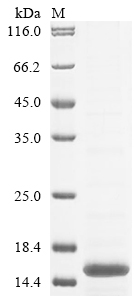This Mouse Plaa recombinant protein was produced in E.coli, where the gene sequence encoding Mouse Plaa (495-584aa) was expressed with the N-terminal 10xHis tag and C-terminal Myc tag. The purity of this Plaa protein was greater than 85% by SDS-PAGE.
Plaa is an enzyme activation protein, and its primary function is to activate Phospholipase A-2 (PLA2) inside cells, promoting the hydrolysis of membrane phospholipids, resulting in the production of free fatty acids and phospholipids. This reaction plays a crucial role in the metabolism of cell membranes, signal transduction, and inflammatory responses. Plaa is typically expressed in various tissues and cell types, including the brain, heart, liver, lungs, and kidneys. Its main role is to control the metabolism of membrane phospholipids by activating PLA2, maintaining the integrity of cell membranes, and participating in cell signal transduction.
As an activator protein for PLA2, Plaa may play a role in inflammatory responses and disease processes, including lipid-mediated inflammation and cell membrane rupture. The Phospholipase A-2 (PLA2) family of proteins is of significant importance in medical research due to their associations with various diseases, such as inflammatory diseases, neurological disorders, and cancer. Plaa, as an activator of PLA2, may have potential implications in the research and treatment of related diseases.




